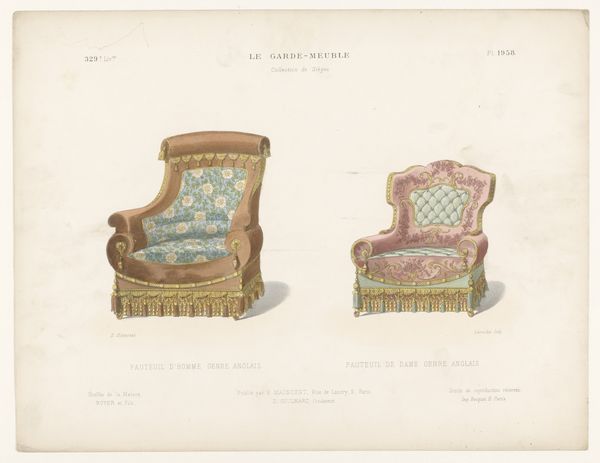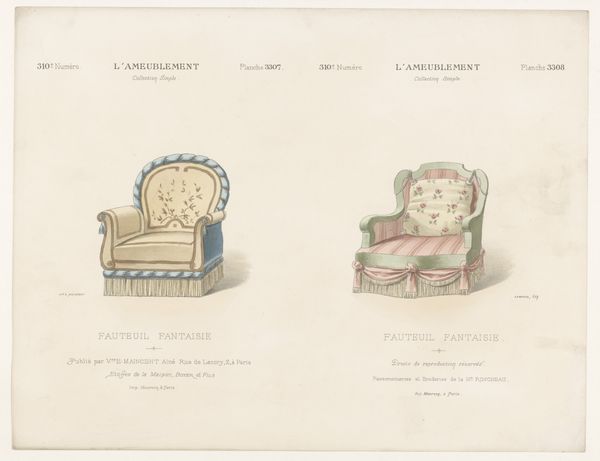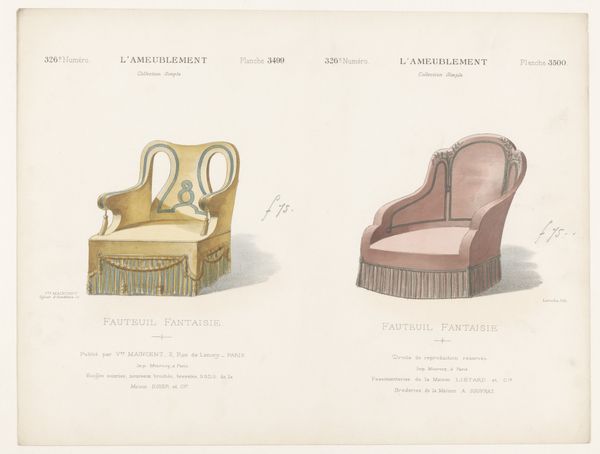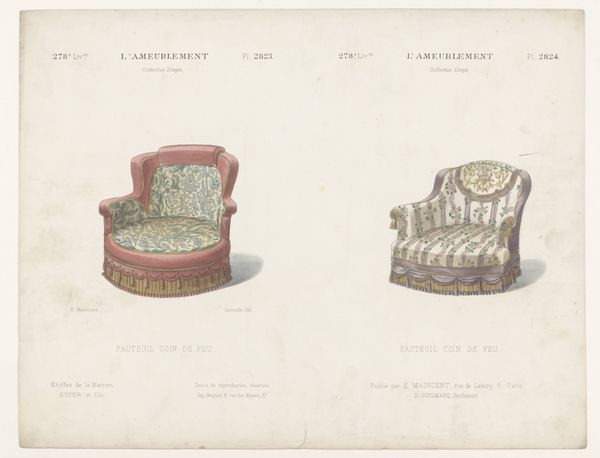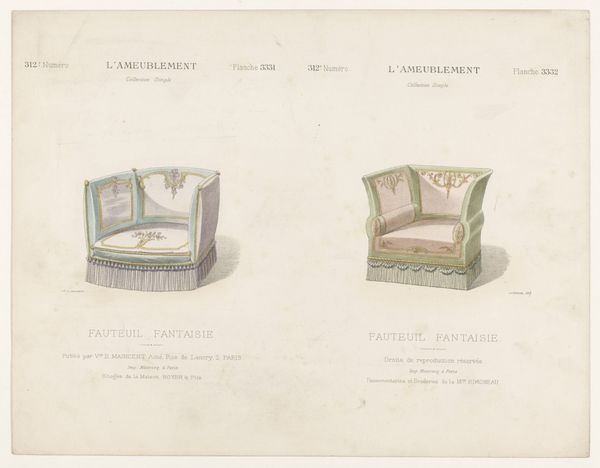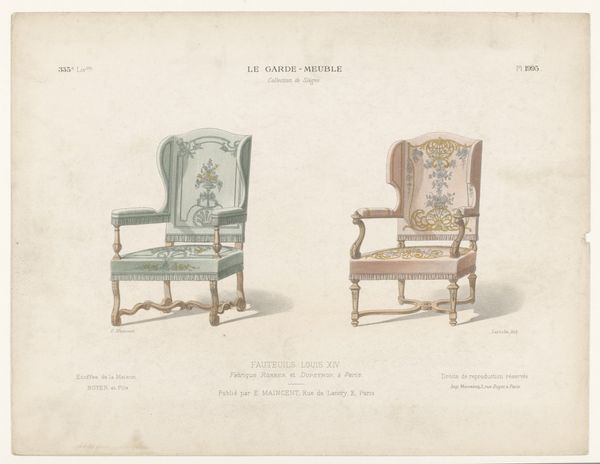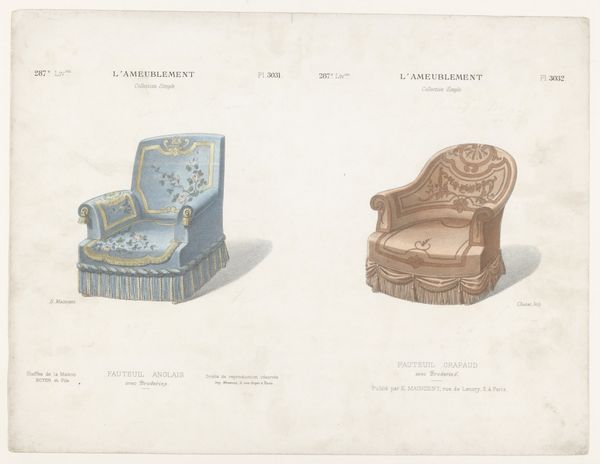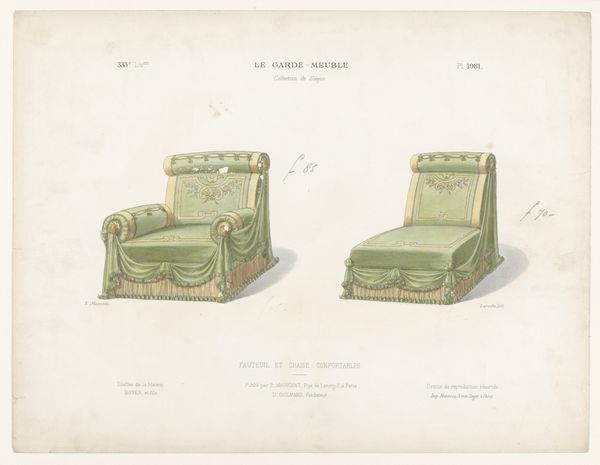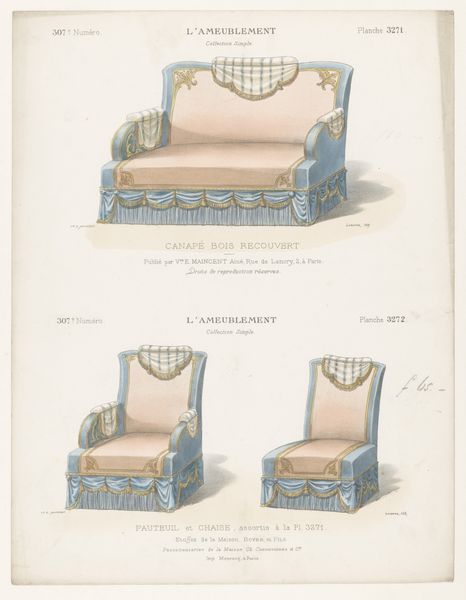
Dimensions: height 275 mm, width 357 mm
Copyright: Rijks Museum: Open Domain
Curator: This delightful watercolor, titled "Twee fauteuils," was crafted by Léon Laroche around 1895. It presents two distinct furniture designs, each labeled 'Fauteuil Fantaisie,’ hinting at their imaginative character. Editor: My initial reaction is that they seem strangely… reserved. For being "fantasy armchairs" they lack a certain flamboyance I might expect. They evoke more of a nostalgic calm, almost like memories of comfort. Curator: It's interesting you perceive a sense of calm. The choice of watercolor does lend a delicate, almost ephemeral quality. Consider the color palettes—the muted green on one and the subdued mauve on the other. These are not bold pronouncements, but whispers of luxury. Do you think these armchairs express deeper sentiments related to romanticism in that era? Editor: Precisely. In the 1890s, the rise of industrialization was creating anxiety. Decorative arts often took a nostalgic turn, and a certain segment of society sought refuge in idealized, softened depictions of a pre-industrial world. That pale green speaks volumes; it echoes the longing for nature as urban landscapes grew. I would situate these fauteuils within an intersectional framework, understanding that access to and appreciation of them would have been inherently tied to social privilege and class aspirations. The fact that this image is labeled l'ameublement which translates to "the furnishing" reminds me that interior decoration could and still can act as a display of social standing. Curator: That's insightful. I'm also struck by the careful rendering of details, almost bordering on symbolism, and even an appeal to history by incorporating Neoclassical embellishments like fringes. I sense in it not just design, but a desire to recapture and maybe idealize craftsmanship, a human scale during the beginning of mechanization. These furnishings suggest stability through a reinterpretation of classical elements to ground the quickly transforming late 19th century. Editor: Ultimately, Laroche has captured a longing embedded within decorative objects. These chairs don’t merely provide seating, they furnish a space with layers of historical and cultural meanings. The attention to details, particularly those Neoclassical touches, underscore an elite desire for permanence amidst radical societal shift, it suggests something about the power structures inherent in artistic tastes of this period. Curator: It makes me contemplate on cultural continuity: furniture embodying both utility and these narratives… It certainly gives weight to considering our daily objects, what histories they too carry into our spaces and psyche. Editor: Agreed. Perhaps these 'fantasy armchairs' ultimately lead us to more substantive reflections about the societal frameworks in which they were idealized and perceived.
Comments
No comments
Be the first to comment and join the conversation on the ultimate creative platform.
